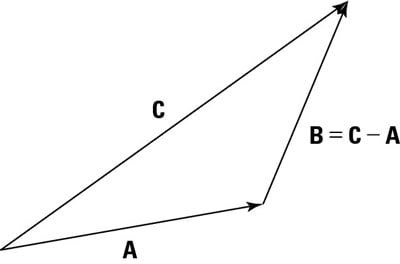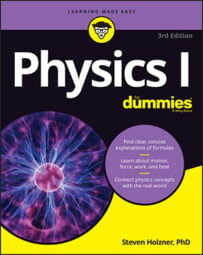You don’t come across vector subtraction very often in physics problems, but it does pop up. To subtract two vectors, you put their feet (or tails, the non-pointy parts) together; then draw the resultant vector, which is the difference of the two vectors, from the head of the vector you’re subtracting to the head of the vector you’re subtracting it from.

To make heads or tails of this, check out the above figure, where you subtract A from C (in other words, C – A). As you can see, the result is B, because C = A + B.
Another (and for some people, easier) way to do vector subtraction is to reverse the direction of the second vector (A in C – A) and use vector addition; that is, reverse the direction of A, making it –A, and add it to C. C – –A = C + A, which gives B as the resultant vector.

